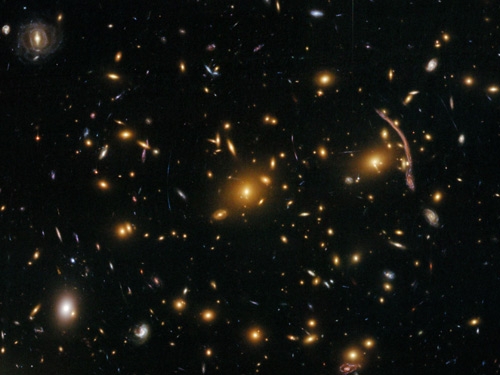The Abell 370 galaxy cluster, seen here by Hubble’s Advanced Camera for Surveys, is 5 billion light years from Earth. The cluster’s gravity bends the light of galaxies that are even more distant, distorting and magnifying them in a phenomenon called gravitational lensing. (Image: NASA/ESA/Hubble SM4 ERO Team/ST-ECF)
The most dramatic example of gravitational lensing seen in the previous slide is this dragon-like shape, which is made up of multiple images of a spiral galaxy that lies some 10 billion light years from Earth (seen most clearly as the head of the dragon). Hubble’s Advanced Camera for Surveys reveals unprecedented detail in this lensed galaxy. (Image: NASA/ESA/Hubble SM4 ERO Team/ST-ECF)
See a gallery of the new Hubble images
The new and improved Hubble Space Telescope has spotted a dragon-shaped cosmic mirage and other celestial wonders, showing it is working better than ever following its latest repairs in May.
Seven NASA astronauts visited Hubble in May on a space shuttle mission to install a new camera and spectrograph, repair two older instruments, and install new batteries as well as new gyroscopes needed to keep the orbiting observatory properly oriented in space.
On Wednesday, scientists released some spectacular new images that demonstrate Hubble is performing well following the upgrades.
One of the pictures shows a galaxy stretched into a dragon shape in a cosmic illusion. It is a normal spiral galaxy, but its light rays get bent on their way to Earth due to the gravity of an intervening galaxy cluster in a phenomenon called gravitational lensing.
The galaxy’s elongated appearance revealed it to be an example of gravitational lensing more than two decades ago. But the new Hubble image shows the galaxy in “incredible detail”, exceeding that of any previous image, says David Leckrone, senior project scientist for Hubble at NASA’s Goddard Space Flight Center in Greenbelt, Maryland.
“This is really fascinating….
We highly recommend New Scientist magazine . Click on the link for the complete article.


